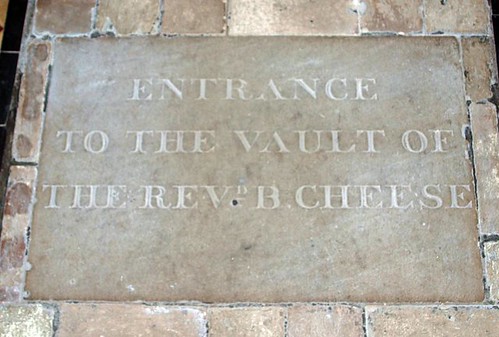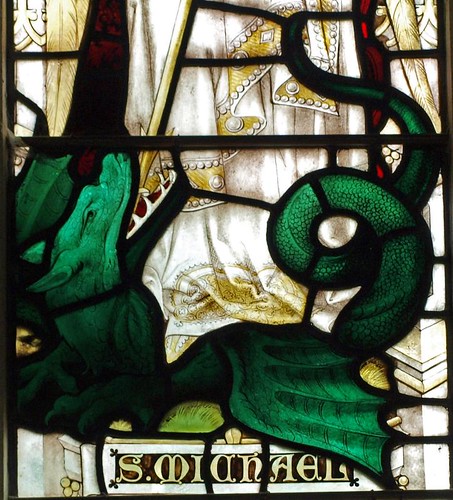ST EDMUND KING AND MARTYR. The interest of the church is wholly the one extremely unusual hammerbeam roof-truss close to the W end. It stands just above the N and S doorways, and so the ingenious carpenter framed these by posts, then connected them by a gable and from these gables started his braces for the hammerbeam. The tracery detail of the gables is clearly of the C14, and not too late in the century either, and thus this truss, as far as one can say, is earlier than the hammer-beam roof of Westminster Hall, in the textbooks still called the earliest in existence. The circles with wheel figures of mouchettes might be mistaken for the Late Flamboyant sometimes found in England in the early C16 under Flemish or French influence, but the pointed trefoils etc. cannot be so late. C14 timber porch, C13 nave and chancel, see two N windows. The W tower of 1876. - FONT. Octagonal, with elaborate foliage and shields in the panels. - PLATE. Cup of 1567. - MONUMENT. Edmund Saunder d. 1615, small, alabaster, with kneeling figure.
TENDRING. A Saxon village is this, with a 17th century hall containing old ceiling beams. By the main road runs a magnificent holly hedge, and from behind the church we have a splendid view over the country to the south. The church, with a tall spire, is entered through a porch with delicately carved tracery in its timbers, foiled bargeboards, and moulded wall-plates. Framing the doorway inside is a great timber arch which, with a similar arch round the facing doorway, supports the hammerbeam of the roof. All this remarkable woodwork is old, set up a few years after the battle of Crecy about 600 years ago. In the 15th century chancel is the tomb of Edmund Saunder, on which, carved in alabaster, he kneels in prayer in the civilian dress of Shakespeare’s time.



No comments:
Post a Comment